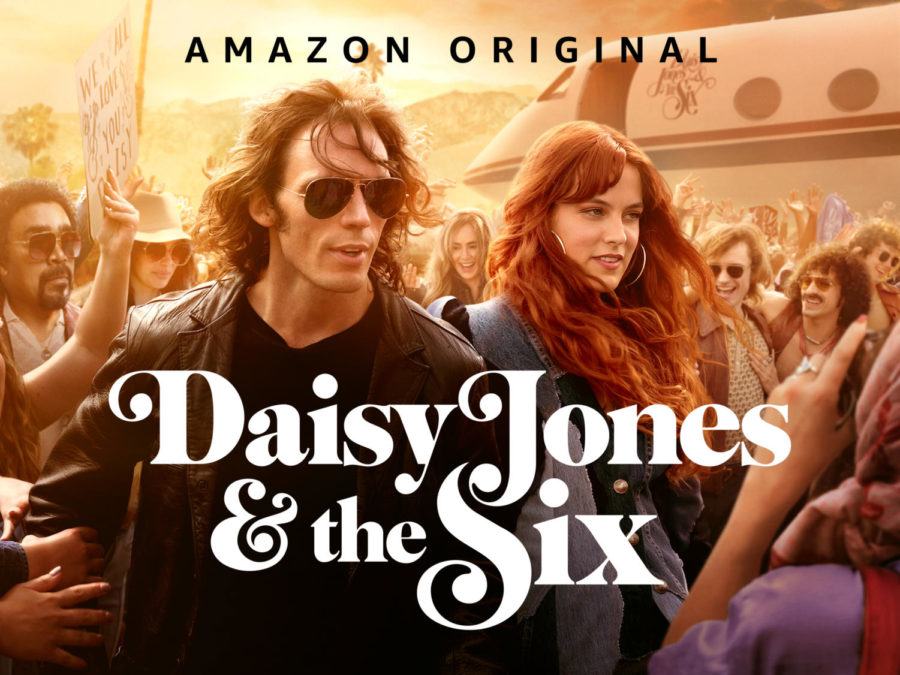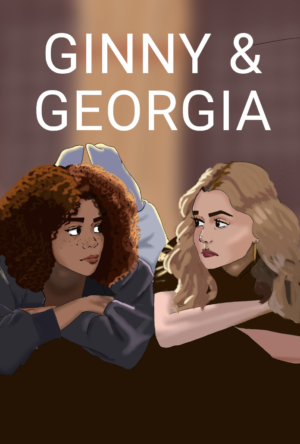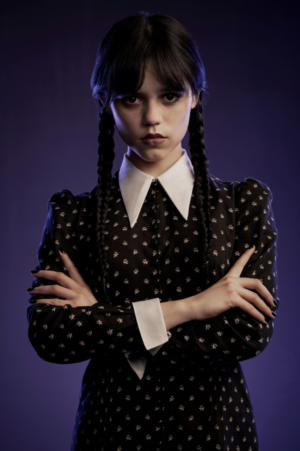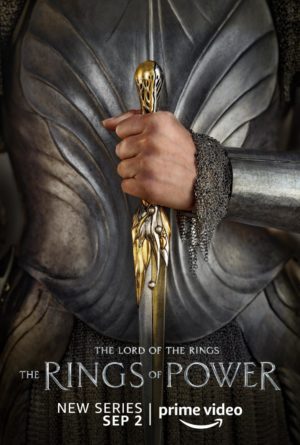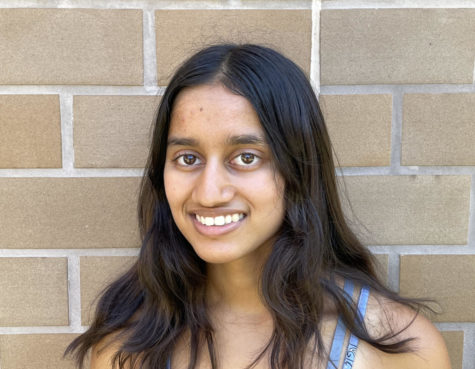“Daisy Jones and the Six” is all rock and no roll
courtesy of Amazon Prime Video
Daisy Jones & the Six follows the titular fictional rock band on its messy secrets and infamous breakup.
May 7, 2023
“Daisy Jones and the Six”, a Prime Video series out March 3, envelops viewers in glamorous rock-and-roll aesthetics but fails to follow through with cohesive plot and characters.
The 10-episode series was inspired by Taylor Jenkins Reid’s novel of the same name, which catapulted in status from a thinly veiled Fleetwood Mac fanfiction to a bestseller with a TV deal just months after its 2019 publication. With a documentary-style format, it follows fictional rock-and-roll band Daisy Jones and the Six, uncovering the truth behind their infamous breakup at the height of their fame in the 1970s.
The show deals heavily with the band’s messy interpersonal relationships, chronicling how their dynamic slowly falls apart as each member grapples with their own issues. The star of the show is, of course, the titular Daisy Jones (Riley Keough), a beloved “it girl” barely masking her drug addiction and relationship insecurities. Daisy’s bold personality clashes with the critical Billy Dunne (Sam Claflin), lead singer of the Six and himself a recovering addict. When the two collaborate on a chart-topping single, sparks fly both on- and off-stage, permanently changing the lives of the band.
The show cleverly integrates scenes of the actual events with “interviews” for the documentary set 20 years later, allowing characters to comment on and react to their younger selves’ decisions. When used, it’s a unique way not only of showing how much the characters have changed since their youth, but also of revealing secrets when a character’s interview statements don’t line up with the truth of a flashback. Unfortunately, the interview format is scarcely used, with most screen time going towards the main narrative in the 1970s.
It’s clear that the showrunners delighted in building the 70s aesthetics of “Daisy Jones.” The array of costumes, locations and music whisk viewers into nostalgia. Watching Daisy and Billy’s first public performance with bated breath together with a screaming in-show crowd, it’s hard not to feel like a real-life fan of these fictional rockstars.
And you can truly become one. Daisy Jones and the Six’s acclaimed album “AURORA” was released on all streaming platforms alongside the show, containing 11 full-length tracks. Reminiscent of bands like Fleetwood Mac, the music in “AURORA” was recorded entirely by the cast, who trained extensively during the pandemic to master their voices and instruments. The catchy beats of “AURORA” add an interactive element to the show, blurring the line between story and reality.
As exhilarating as it is to be surrounded by hype for fictional celebrities, the show begins to fall apart when it comes to plot and characterization. The majority of the screen time is devoted to a love triangle between Daisy, Billy and Billy’s wife Camila (Camila Morrone), which ends up eclipsing their individual character arcs – especially Camila’s.
Camila’s primary role is as Billy’s love interest. She has close to zero scenes where she’s neither interacting with nor thinking of him. This tendency to brush over the rest of her life reduces the depth of her relationships with other characters – there’s an almost-heartwarming scene where Camila supports the band’s keyboardist Karen (Suki Waterhouse) through an abortion, but the action lacks meaning because the last memorable interaction between these two characters was a fight multiple episodes before.
The biggest stumble is the series’ ending. As tensions within the band rise, Billy and Daisy struggle with their attraction to each other until Billy firmly rejects her, stating that although he wants to be with Daisy, his first loyalty is to his wife. In other words, he is staying with Camila out of obligation. Naturally, this is absolutely heartbreaking for Camila to hear, and nearly tears apart their marriage. It has all the potential to be a poignant moment, but the resolution of the fight (and her loving devotion in the subsequent 20 years) are all brushed over in a quick montage with emotional piano music before the show moves on to more yearning between Billy and Daisy.
As the only main character who is a woman of color, Camila shouldn’t constantly be getting the short end of the stick. That being said, the series does take positive steps towards representation. Nabiyah Be’s performance as disco star Simone Jackson, a queer Black woman who is like a sister to Daisy, stands out as one of the highlights. Although we see Simone’s glittery world of underground nightclubs only in brief flashes, it feels deserving of its own show.
“Daisy Jones and the Six” isn’t the most well-developed show in the universe, but its high-stakes drama and ethereal visuals make it wildly addicting nonetheless.

